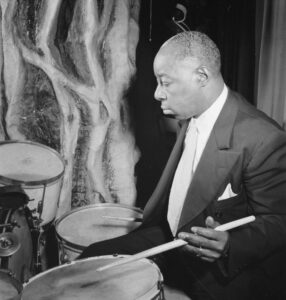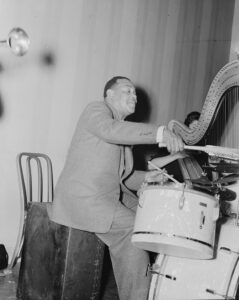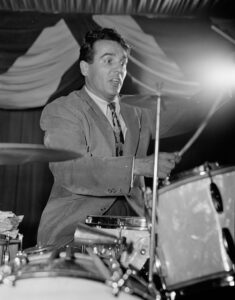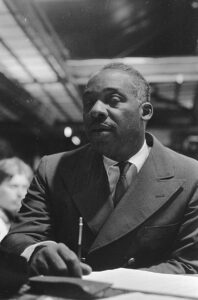Jazz drumming forms the rhythmic backbone of one of America’s most influential musical genres.
This percussive art combines technical prowess with creative improvisation, shaping the very essence of jazz.
Jazz drummers play a pivotal role in establishing groove, driving dynamics, and facilitating musical conversation within ensembles.
This article will explore the rich history, evolving techniques, and enduring legacy of famous jazz drummers, delving into their instruments, styles, and contributions to the genre.
We’ll examine the evolution of jazz drumming through different eras, highlight legendary performers, and investigate the impact of jazz percussion on other musical forms.
The Evolution of Jazz Drumming Through the Decades
Jazz drumming has undergone significant transformations since its inception in the early 20th century.
The 1920s saw the emergence of early jazz pioneers who laid the foundations for future rhythmic innovations.
These drummers transitioned from military-style drumming to a more syncopated approach, incorporating African rhythms and New Orleans second-line traditions.
As the Swing Era dawned in the 1930s, drummers developed new techniques to drive large ensembles, perfecting the art of keeping time on the ride cymbal and using brushes for softer dynamics.
The 1940s ushered in the bebop revolution, requiring drummers to play at faster tempos and with greater complexity.
Bebop drumming differed from swing drumming in its emphasis on rhythmic interplay and extended solos.
The hard bop and cool jazz movements of the 1950s further expanded the drummer’s role, allowing for more freedom and experimentation within the rhythm section.
Essential Skills and Techniques in Jazz Drumming
Jazz drumming requires a unique set of skills and techniques.
Timekeeping forms the foundation of a jazz drummer’s responsibilities, demanding precise control of tempo and groove.
Syncopation plays a crucial role, with drummers accenting off-beats and creating rhythmic tension.
Improvisation stands as a cornerstone of jazz drumming, allowing performers to spontaneously create rhythmic patterns and respond to other musicians.
Key techniques in jazz drumming include:
- Four-way coordination
- Brush work
- Comping complementary playing
- Ghost notes
- Polyrhythms
Table 1: Essential Jazz Drumming Techniques and Their Applications
| Technique | Description | Application |
|---|---|---|
| Ride cymbal pattern | Consistent rhythm on ride cymbal | Maintains steady pulse in ensemble |
| Hi-hat control | Varied open and closed sounds | Adds rhythmic texture and accents |
| Brush sweeping | Circular motion on snare with brushes | Creates smooth, sustained sound |
| Cross-stick | Rim click on snare drum | Provides subtle accent in quieter passages |
| Shell accents | Striking drum shells for tonal variety | Adds melodic elements to drum solos |
The Jazz Drummer’s Kit: Components and Setup
A jazz drum kit typically includes several essential components that allow for versatile performance.
The standard jazz kit consists of a bass drum, snare drum, ride cymbal, hi-hat, and one or two tom-toms.
Many jazz drummers prefer smaller bass drums for their focused sound and portability.
Cymbals play a crucial role in jazz drumming, with the ride cymbal serving as the primary timekeeping instrument.
List of common jazz drum kit components:
- 18″ or 20″ bass drum
- 14″ snare drum
- 12″ or 14″ floor tom
- 20″ or 22″ ride cymbal
- 14″ hi-hats
- 16″ or 18″ crash cymbal optional
- 10″ or 12″ rack tom optional
Famous Jazz Drummers of the 1920s and 1930s
Early jazz drummers laid the groundwork for future generations.
Baby Dodds pioneered the use of press rolls and developed a highly personal style that influenced countless others.


Zutty Singleton incorporated Caribbean rhythms into his playing, expanding the vocabulary of jazz drumming.


Gene Krupa popularized the extended drum solo and brought unprecedented visibility to jazz drummers through his work with Benny Goodman’s orchestra.


Bebop Revolution: Drummers Who Shaped the 1940s and 1950s
Bebop drumming revolutionized the role of the drummer in jazz.
Kenny Clarke pioneered the use of the ride cymbal as the primary timekeeping instrument, freeing up the bass drum and snare for accents and interplay.


Max Roach elevated drum solos to new heights of musicality, composing rhythmic melodies on the drum set.
Art Blakey infused his playing with gospel and African influences, creating a powerful, driving style that defined hard bop drumming.
The Rise of Hard Bop and Modal Jazz Drumming
Hard bop and modal jazz demanded new approaches from drummers.
Philly Joe Jones exemplified the hard bop style with his crisp articulation and swinging feel.
Elvin Jones developed a polyrhythmic approach that perfectly complemented John Coltrane’s modal explorations.
Tony Williams pushed the boundaries of jazz drumming at a young age, incorporating elements of avant-garde and rock music into his playing.
Fusion and Jazz-Rock: Drummers Pushing Boundaries
Fusion drumming combines elements of jazz, rock, and other genres.
Billy Cobham showcased superhuman technical abilities while maintaining a strong groove in his work with the Mahavishnu Orchestra.
Steve Gadd brought a jazz sensibility to pop and rock recordings, influencing a generation of drummers across genres.
Vinnie Colaiuta demonstrated mastery of complex time signatures and effortless groove in fusion contexts.
Legendary Jazz Drum Solos in History
Jazz drum solos showcase the technical prowess and creative spirit of the performers.
Gene Krupa’s solo on “Sing, Sing, Sing” stands as one of the earliest and most famous extended drum features.
Max Roach’s “The Drum Also Waltzes” demonstrates the melodic potential of the drum set.
Buddy Rich’s solos with his big band exemplify speed, power, and showmanship in jazz drumming.
The Role of the Drummer in Jazz Ensembles
Jazz drummers contribute several key elements to ensemble performance.
They provide the rhythmic foundation, control dynamics, and facilitate interaction between band members.
In small combos, drummers enjoy greater freedom for improvisation and interaction.
Big band drumming requires precise timekeeping and the ability to drive a large ensemble through arranged passages and improvised solos.
Table 2: Drummer’s Role in Different Jazz Ensemble Settings
| Ensemble Type | Primary Responsibilities | Key Techniques |
|---|---|---|
| Small Combo | Interactive timekeeping, soloing | Comping, trading fours |
| Big Band | Section coordination, ensemble hits | Kick patterns, ensemble figures |
| Trio | Extended soloing, rhythmic variety | Polyrhythms, melodic drumming |
| Avant-garde | Textural exploration, free improvisation | Extended techniques, non-traditional sounds |
Female Jazz Drummers: Breaking Barriers and Setting New Standards
Female jazz drummers broke significant barriers in a male-dominated field.
Viola Smith challenged gender norms in the 1930s and 1940s, earning the title “fastest girl drummer in the world”.
Terri Lyne Carrington achieved widespread recognition for her versatile playing and became the first woman to win a Grammy for Best Jazz Instrumental Album.
Cindy Blackman Santana continues to push boundaries in both jazz and rock contexts, showcasing virtuosic technique and deep musicality.
Modern Jazz Drummers: Innovations and Cross-Genre Influences
Contemporary jazz drummers incorporate diverse influences and new technologies into their playing.
Brian Blade blends elements of jazz, rock, and world music in his approach to the drum set.
Nate Smith combines jazz tradition with hip-hop-inspired grooves, creating a unique modern style.
Jojo Mayer explores electronic music concepts on acoustic drums, pushing the boundaries of what’s possible on the instrument.
Jazz Drumming’s Influence on Other Music Genres
Jazz drumming has influenced numerous other musical styles.
Rock drumming evolved from jazz techniques, with early rock drummers drawing heavily from swing and bebop vocabulary.
Funk rhythm development owes much to jazz drumming’s emphasis on groove and syncopation.
Hip-hop beat production often samples jazz drum breaks, creating a direct link between these genres.
Essential Jazz Drumming Techniques and Exercises
Aspiring jazz drummers can develop their skills through focused practice and specific exercises.
Rudiments form the technical foundation for jazz drumming, with paradiddles, ratamacues, and buzz rolls finding frequent application in jazz contexts.
Independence exercises help drummers develop the ability to play different rhythms with each limb.
Transcription practice allows students to analyze and internalize the styles of great jazz drummers.
List of essential jazz drumming exercises:
- Ride cymbal patterns with varying bass drum and snare accents
- Brush technique development sweeps, taps, and rolls
- Comping exercises over ostinato patterns
- Polyrhythmic studies 3 against 2, 5 against 4, etc.
- Solo trading and development trading fours, eights, etc.
Jazz Festivals and Their Significance for Drummers
Jazz festivals provide unique opportunities for drummers to showcase their skills and collaborate with other musicians.
Events like the Newport Jazz Festival and Montreux Jazz Festival have featured legendary performances by jazz drummers throughout history.
Many festivals offer workshop opportunities, allowing aspiring drummers to learn from established professionals.
Drum battles, popularized by events like Jazz at the Philharmonic, continue to excite audiences at modern jazz festivals.
Jazz Drumming Education: From Conservatories to Online Resources
Jazz drumming education has evolved significantly over the years.
Conservatory programs offer comprehensive training in jazz performance, theory, and history. Master classes provide focused instruction from renowned drummers.
Online resources have democratized jazz education, with video lessons, play-along tracks, and interactive courses making high-quality instruction accessible to a global audience.
Choosing the Right Equipment: Drumsticks, Cymbals, and More
Selecting appropriate equipment plays a crucial role in developing a personal sound.
Jazz drummers often prefer lighter, smaller drumsticks for their increased rebound and articulation.
For a complete jazz drumming experience, choosing the right drumsticks is essential. This article will explore choosing the right jazz drumsticks.
Cymbal selection is critical, with many jazz drummers favoring thinner, more complex-sounding cymbals.
Drum head choices affect both tone and playability, with coated heads often preferred for their warmer sound and brush-friendly surface.
The Future of Jazz Drumming: Emerging Trends and Technologies
Jazz drumming continues to evolve in the 21st century.
Electronic elements are increasingly incorporated into acoustic setups, allowing for new sonic possibilities.
Social media has created new platforms for drummers to share their art and connect with audiences.
Cross-genre collaboration remains a driving force in the evolution of jazz drumming, with drummers drawing inspiration from diverse musical traditions.
How to Become a Jazz Drummer: A Roadmap for Aspiring Musicians
Becoming a jazz drummer requires dedication, practice, and immersion in the genre.
Aspiring drummers should develop a strong foundation in rudiments and technique.
Listening to jazz recordings is crucial for developing an understanding of the genre’s history and vocabulary.
Jam sessions provide invaluable experience in real-world musical situations.
Studying with experienced teachers can accelerate the learning process and help avoid common pitfalls.
Table 3: Steps to Becoming a Jazz Drummer
| Step | Description | Key Activities |
|---|---|---|
| 1. Build Fundamentals | Develop basic technique and rudiments | Practice pad work, snare solos |
| 2. Study Jazz History | Listen to recordings from all eras | Transcribe solos, analyze styles |
| 3. Learn Jazz Theory | Understand harmony and form | Study chord progressions, song structures |
| 4. Develop Time Feel | Master various tempos and styles | Metronome work, play-along tracks |
| 5. Gain Performance Experience | Play with other musicians | Attend jam sessions, form combos |
| 6. Refine Personal Style | Synthesize influences into unique voice | Compose drum solos, experiment with setups |
Conclusion: The Enduring Legacy of Jazz Drumming
Jazz drumming has left an indelible mark on the landscape of modern music.
From its roots in African and European traditions to its current global influence, jazz drumming continues to evolve and inspire.
The legacy of famous jazz drummers lives on through recordings, performances, and the countless musicians they’ve influenced.
As jazz moves forward into new territories, drummers will undoubtedly continue to play a central role in shaping the music’s future.
